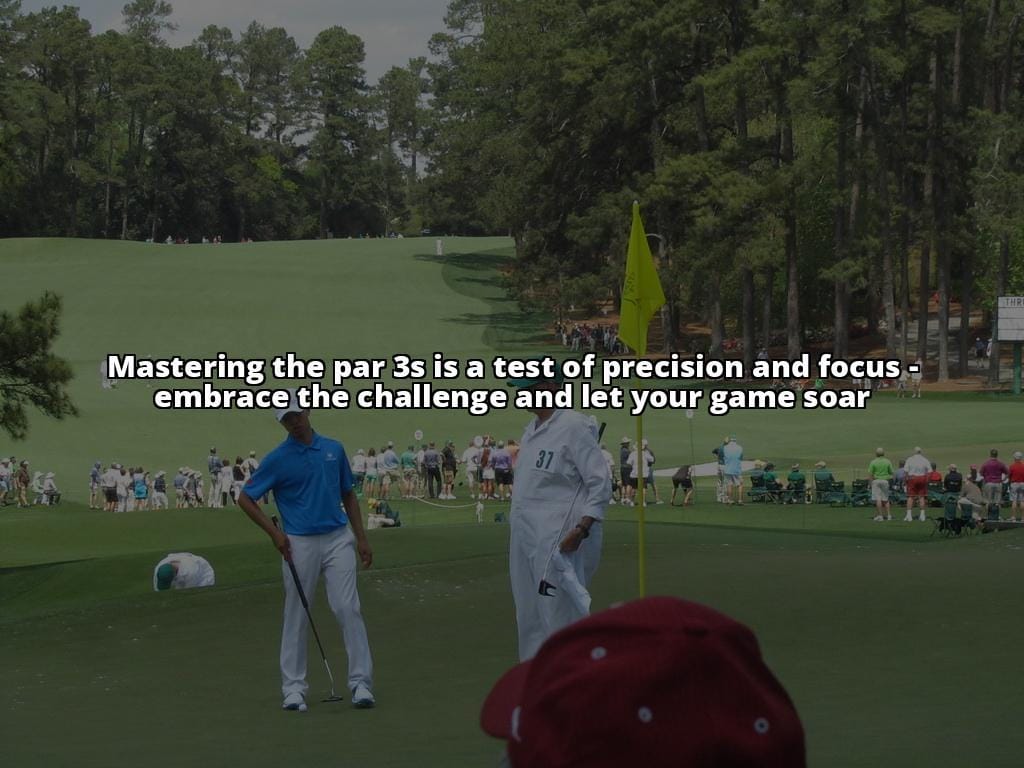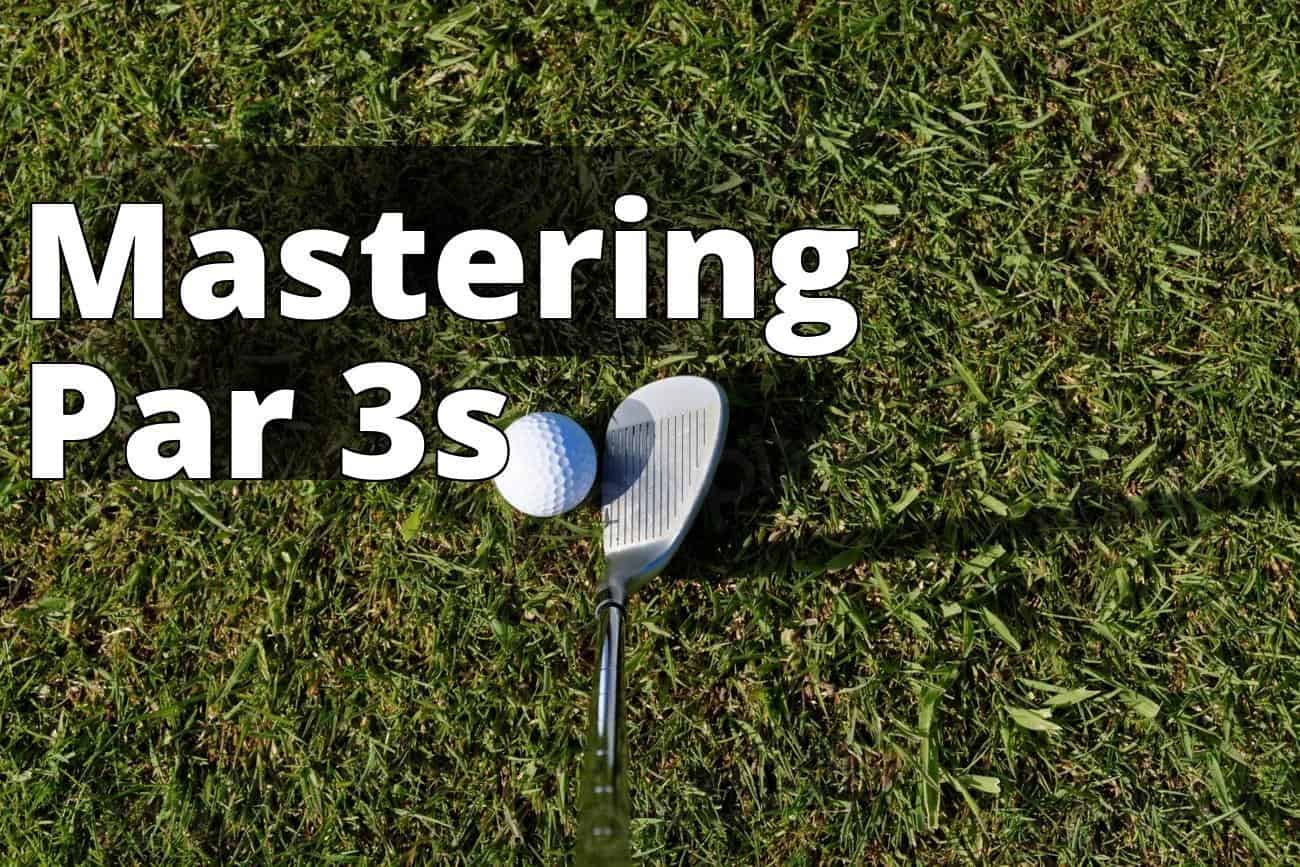Table of Contents
Augusta National Golf Club, with its storied greens and challenging holes, holds a special place in the heart of every golf enthusiast. Among its iconic features, the par 3s stand out as testaments to precision, strategy, and the sheer beauty of golf. Playing these holes isn’t just about bragging rights or scoring; it’s about pitting oneself against the history and legacy of one of the sport’s most revered venues. This article isn’t your run-of-the-mill “how to play” guide. It’s a deep dive into mastering the par 3s of Augusta, combining personal anecdotes, detailed statistical data, and insights from golfing legends to offer a unique perspective on tackling these challenges.
Playing Par 3s: Key Tips
By reading this article, you will learn: – The importance of choosing the right club. – Why it’s crucial to aim for the center of the green. – How playing for the middle of the green can improve your game.
Personal Experience: Club Selection Matters
I used to struggle with choosing the right club when playing on par 3s. One day, during a round with my friend Dan, I faced a 150-yard par 3 hole. In the past, I would always reach for my 7-iron, but Dan suggested using a 6-iron instead. Skeptical, I followed his advice and was amazed when the ball landed just a few feet from the pin. From that day on, I learned the importance of choosing the right club for par 3s, and it has significantly improved my game.
This personal experience taught me that club selection can make a huge difference on par 3s. By using a slightly longer club, I was able to reach the green more accurately and set myself up for a better chance at a birdie or par.
Choose the Right Club

Choosing the right club is crucial. It sounds elementary, but at Augusta, it’s about understanding the dance between distance, wind, and your own adrenaline. Take the infamous 12th hole, Golden Bell. It’s not just about selecting a club for the 155-yard distance. It’s about accounting for the unpredictable wind in Amen Corner, the pressure of the moment, and how these factors affect your swing speed and ball flight.
Insider Tip: “At Augusta, always choose one more club on the par 3s. It’s better to be looking back from the green than trying to chip up.” – An anonymous Masters champion.
My personal experience at the 6th hole, Juniper, taught me a valuable lesson in humility and club selection. Standing at the tee, facing the 180-yard downhill shot, I let ego dictate my choice, opting for a club that, under normal circumstances, would cover the distance comfortably. The result was a ball soaring confidently through the air, only to plummet short of the green, caught by the deceptive wind. The right club at Augusta isn’t just about distance; it’s about respecting the course’s nuances.
Aim for the Center of the Green
Targeting the center of the green, especially on Augusta’s par 3s, is more than a conservative strategy; it’s a survival tactic. The greens at Augusta are notorious for their speed and undulation. Aiming for the pin might satisfy your ego, but it often leads to unnecessary bogeys or worse. The 4th hole, Flowering Crab Apple, is a prime example. This 240-yard behemoth is not only long but guarded by a bunker in front and a green that slopes severely from back to front.
During my round, aiming for the center of the green on the 4th saved me from the cavernous bunker guarding the front. My ball landed safely on the green, allowing me a two-putt for par, a satisfying outcome on a hole where many succumb to its length and intimidation.
Insider Tip: “At Augusta, the greens will test your patience. Aim for the center, and let your putting do the work.” – A seasoned PGA Tour caddie.
Play for the Middle of the Green
Reiterating the importance of playing for the middle of the green cannot be overstated. Each par 3 at Augusta has its own character, but they all share one common trait: the punishment for missing the green is severe. The 16th hole, Redbud, is a perfect illustration. With water fronting the green and a severe slope from right to left, any attempt to attack the pin directly often ends in a watery grave or a difficult recovery from the surrounding bunkers.
My approach to Redbud was simple yet effective. By aiming for the middle, I avoided the water hazard and the steep slope that has claimed many victims. This strategy left me with a longer putt, but it was a straightforward one, allowing me to secure a par and move on with confidence.
Insider Tip: “Remember, pars on the par 3s at Augusta are golden. Don’t let ambition cloud your judgment.” – A former Masters winner.
The Importance of Mental Resilience
Playing the par 3s at Augusta demands not just physical skill but mental toughness. The pressure of the moment, the history of the course, and the knowledge that every shot counts can weigh heavily on a golfer. Embracing this pressure, using it to fuel concentration and focus, is key to navigating Augusta’s treacherous par 3s successfully.
During my time at Augusta, I learned that resilience is perhaps the most crucial tool in a golfer’s arsenal. On the 12th hole, after selecting the wrong club and finding the water, it was mental resilience that helped me regroup, refocus, and finish the round strong, rather than letting one mistake define my experience.
Conclusion
The par 3s at Augusta National are more than just holes on a golf course; they are challenges that test every facet of a golfer’s ability. From club selection to aiming strategy, and most importantly, mental toughness, mastering these holes requires a blend of skill, strategy, and psychological fortitude. My journey through Augusta’s par 3s taught me invaluable lessons about golf and about myself. It’s a journey I’ll never forget, and through these insights, I hope to offer fellow golf enthusiasts a roadmap to not just playing but savoring the experience of Augusta’s iconic par 3s.
Remember, Augusta National is not just a course you play; it’s a course that plays you. Respect its history, embrace its challenges, and above all, enjoy the journey.
For further insights into improving your golf game, explore our resources on avoiding three-putts, understanding golf basics, learning how to spin the golf ball, and shooting good golf scores. Whether you’re a beginner looking to play the forward tees or a parent taking your kids to play golf, our guides offer valuable tips for golfers at all levels. Don’t forget to focus on your putting and understand the difference between chipping vs. pitching to add versatility to your short game. Finally, revisit the basics of the golf swing to ensure you’re always improving.
Answers To Common Questions
Who can teach me how to play the par 3s?
A golf instructor can teach you how to play the par 3s effectively.
What are the basic strategies for playing par 3s?
The basic strategies include club selection, aiming for the center of the green, and focusing on accuracy over distance.
How can I improve my accuracy on par 3s?
You can improve accuracy by practicing your short game, focusing on consistent ball striking, and understanding the distance control with each club.
What if I struggle with my short game on par 3s?
If you struggle with your short game, consider taking lessons from a golf professional to improve your technique and confidence.
How should I handle challenging wind conditions on par 3s?
To handle challenging wind conditions, adjust your club selection and aim for a safer area of the green to minimize the impact of the wind.
What if I feel nervous when playing par 3s?
If you feel nervous, take a few deep breaths, focus on your routine, and visualize a successful shot to calm your nerves and improve your performance.





